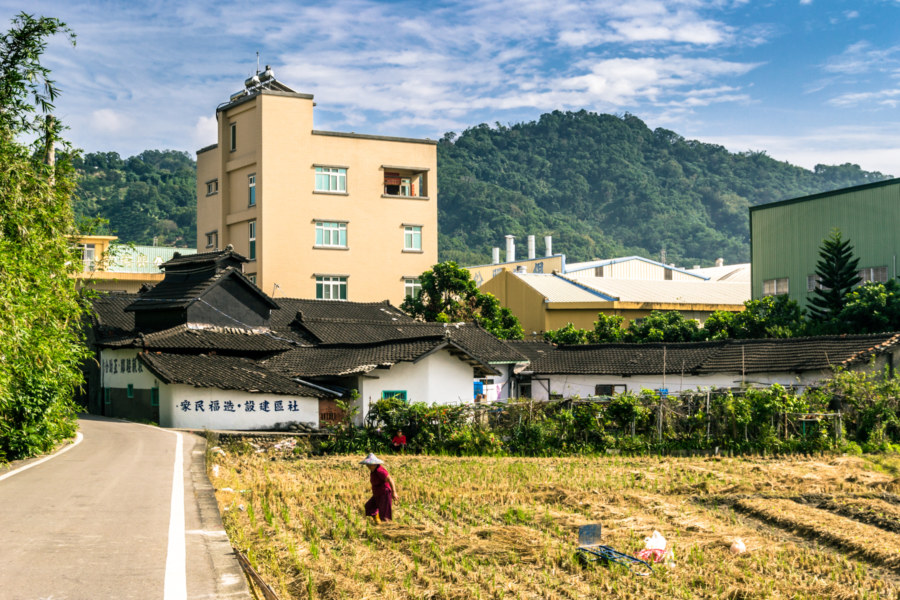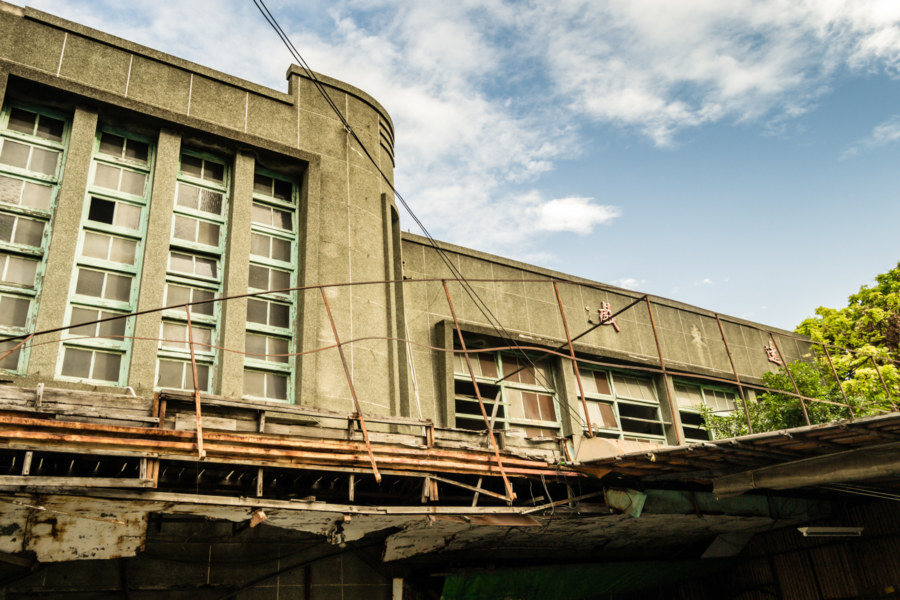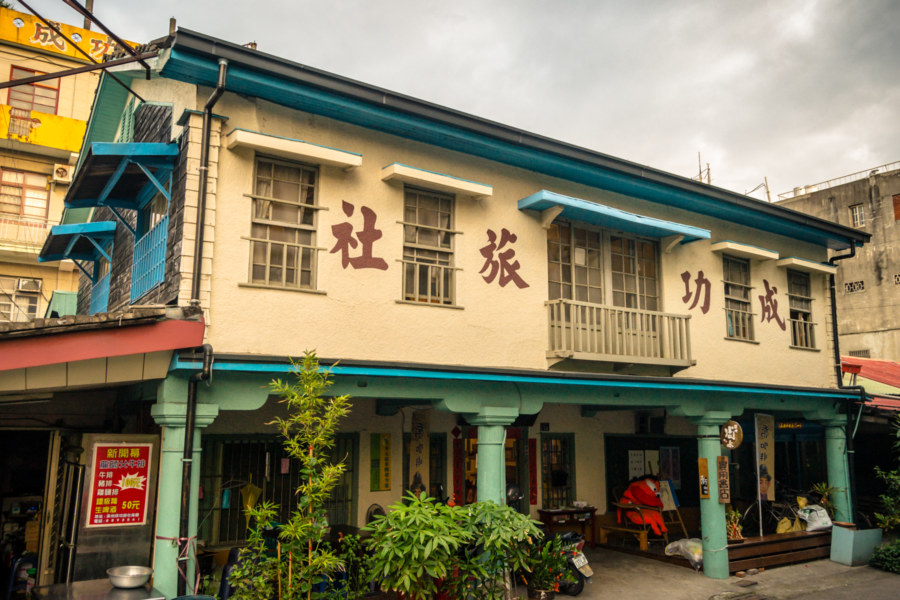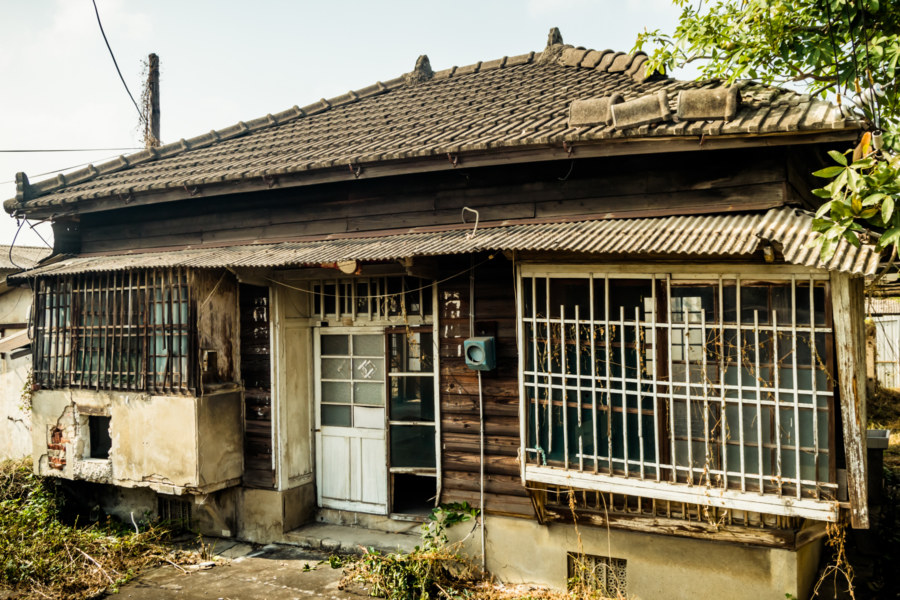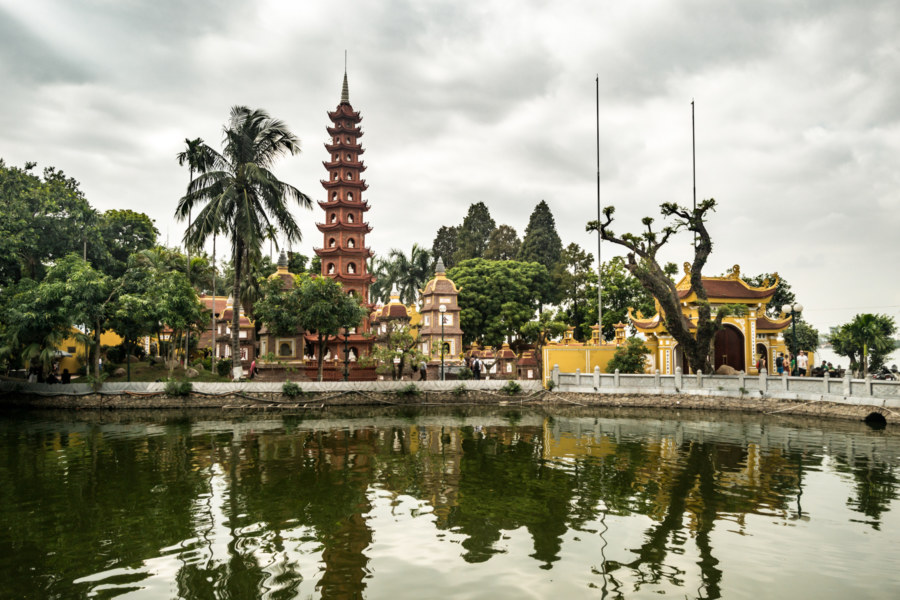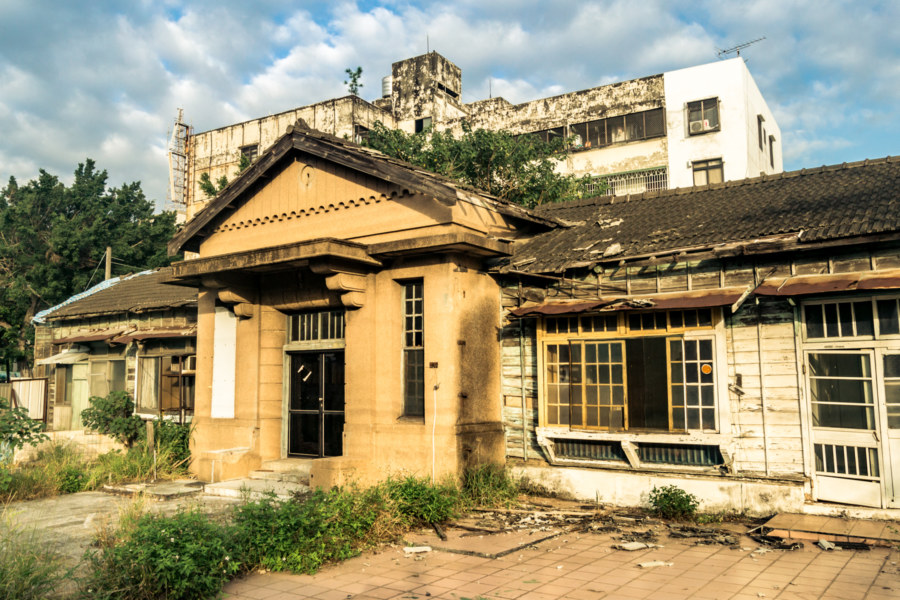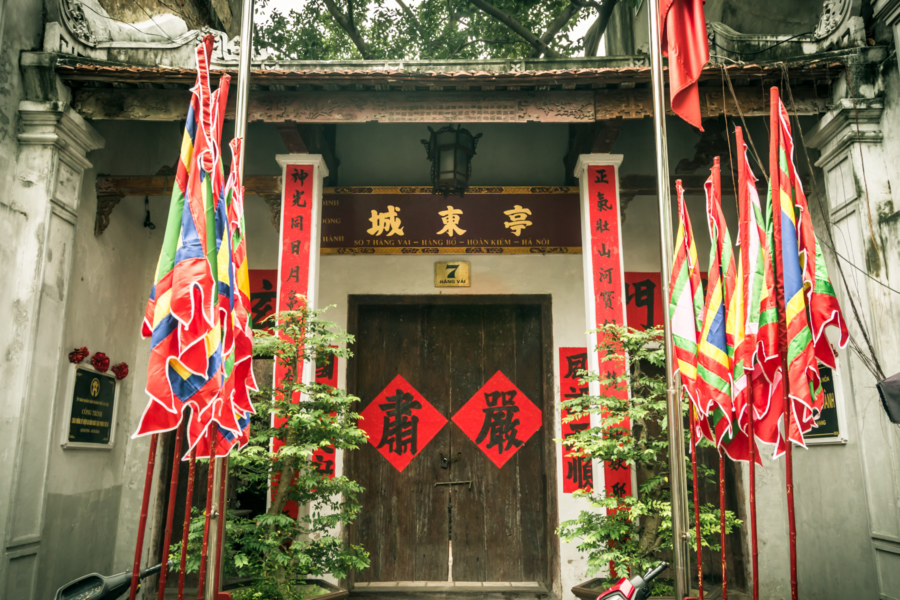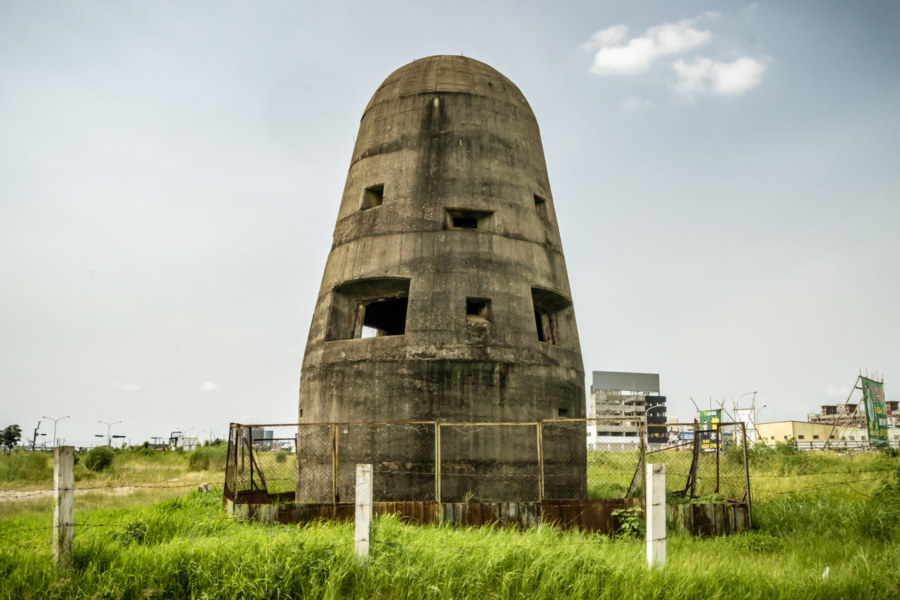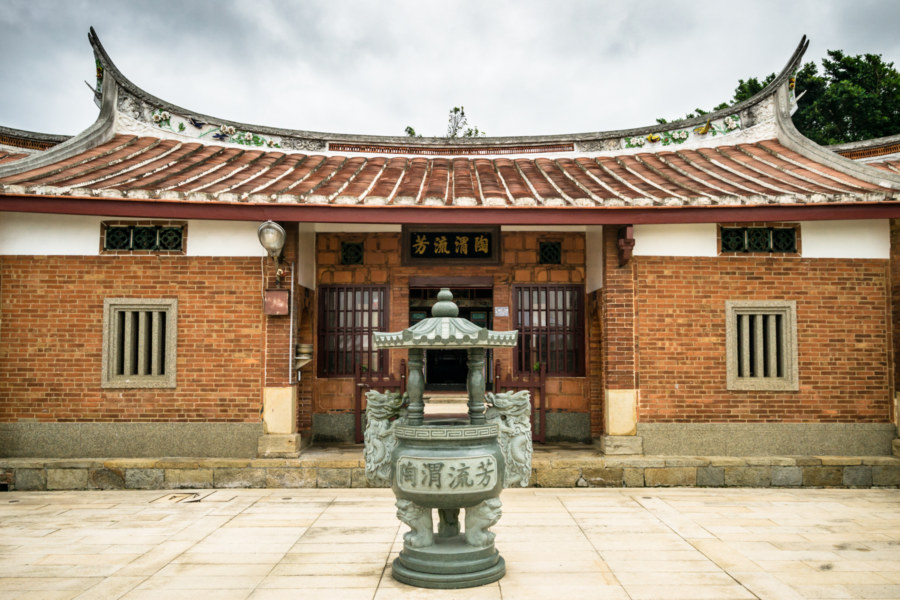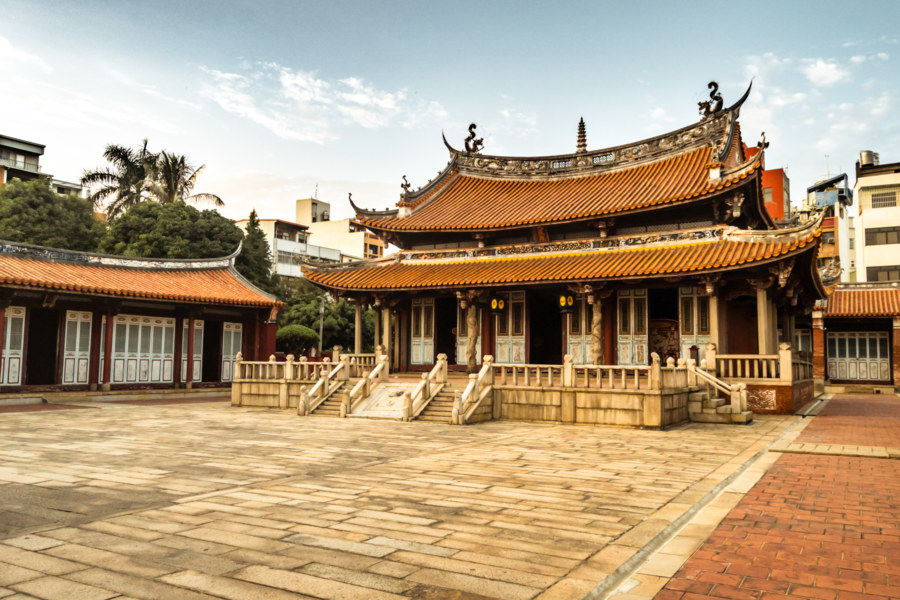Liáncūn Tobacco Barn 鎌村菸樓 is a historic building on the agrarian outskirts of Fengyuan, Taichung, and one of the last of its kind. Back in the tobacco industry heyday of the 1950s there were more than 100 tobacco barns in this small agricultural community. Almost all the others have been torn down or fallen into grave disrepair over the years but this one remains in surprisingly good condition, a testament to the upkeep of the owners, who still live inside. I haven’t had any luck sourcing credible historic information about this place—it isn’t an officially designated heritage property nor a tourist attraction—but I’d hazard a guess that it is at least 70 years old. I would have asked the old lady in the courtyard but she didn’t seem all that interested in having a chat—though she warmly granted permission to shoot these photographs when asked.
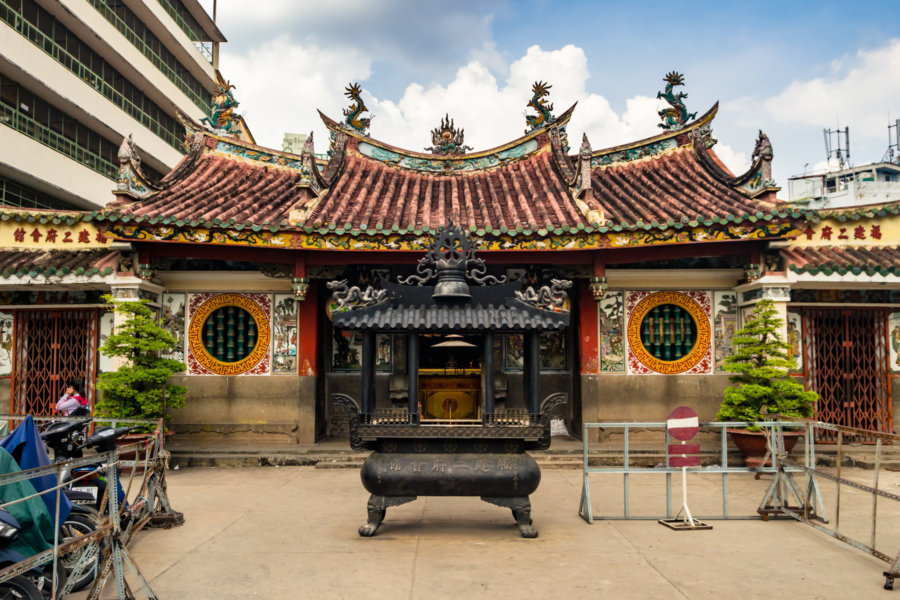
Posts with a historical angle, situating content in time and space. Here we go deeper into the past…
Beidou Yuandong Theater 北斗遠東戲院
Beidou is home to the historic Yuǎndōng Theater (遠東戲院, literally “Far East Theater”), originally built in 1955. Like most vintage theaters in Taiwan it struggled through the home video era and eventually shut down in the late 1990s. Unlike many other cinemas of its generation it does not appear to have been subdivided into smaller theaters prior to going out of business. It was, however, converted for use as a karaoke bar or gambling den at some point, judging by what I observed on a recent visit. As of 2015 the interior is used for nothing more than storage, particularly for a restaurant that has since colonized the area adjacent to the former ticket booth and entrance.
Xizhou Chenggong Hostel 溪州成功旅社
During a recent visit to Xizhou, a small rural township in southern Changhua, I made a brief stop to check out the historic Chénggōng Hostel (成功旅社](https://www.facebook.com/pages/成功旅社農用書店/774365992596884)). I had no idea what to expect, having learned of its existence while browsing Google Maps in search of points of interest, and was pleasantly surprised by what I found there. It is privately owned and operated but they’ve gone to great lengths to preserve the building, transforming it into a tourist attraction and community space. The ground floor is home to a shop showcasing local products and a dual-purpose agricultural library and event space. Upstairs is something of a museum, lightly furnished with rickety beds and tatami mats. The floorboards creak and there is a mustiness about the place that makes it feel genuinely old. It wasn’t difficult to imagine what it might have been like half a century ago in the midst of the sugar boom.
Wuri Stationmaster Residence 烏日車站舊站長宿舍
The old stationmaster’s house in Wuri has been left to the elements for years. When will the city get serious about protecting its cultural heritage?
Today I breezed through southern Taichung on my way to the high-speed rail station and parts beyond. Along the way I made a brief stop in Wuri to follow up on a lead I uncovered while researching my much longer feature about the historic Japanese colonial era Wuri Police Station. Apart from the police station there are two other officially designated historic sites in the district (with nearby Jukuiju Mansion almost certain to become the fourth in the near future). One of these is the former Stationmaster Residence (站長宿舍) next to Wuri Station (烏日車站), pictured here. Despite its status as a heritage property the city has done nothing to restore it and little to maintain the old residence. About all they’ve done in recent years is put up metal fencing sturdy enough to prevent the intrusion of mildly curious explorers such…
Postcards From Hanoi
Gathered here are around forty of my better photographs from a five day stay in Hanoi, Vietnam, in November 2016. All of these images were captured while idly wandering around the famous Old Quarter and its environs. I was not particularly adventurous on this trip but I still managed to find plenty to feast my eyes upon—and the food and coffee certainly lived up to expectations! I also found it interesting to apply some of my growing knowledge of East Asian culture gleaned from these years of living in Taiwan. Each photo is annotated with onward links to more information should anything pique your interest.
Wuri Police Station 烏日警察官吏派出所
Wuri Police Station 烏日警察官吏派出所 is a historic Japanese colonial era building dating back to the early 1930s. Located in Wuri, Taichung, it was built in a simple, subdued style with more of a nod toward Rationalism than the localized Art Deco or Baroque Revival styles commonly seen in commercial and institutional architecture of Shōwa period Taiwan. After the station was decommissioned in the late 1960s it was used for residential purposes until it was ultimately abandoned for unknown reasons. Historic status was announced in 2004 and officially confirmed in 2013 but restoration efforts were stuck in the planning stages until 2020.
Dinh Dong Thanh
One of the more interesting temples I stepped inside on a recent visit to the Old Quarter of Hanoi is the recently renovated Đình Đông Thành (亭東城, loosely: “East City Pavilion”). Having explored many temples in Taiwan over the years I was familiar with some of what I found there—but much of it was completely foreign to me. Looking up information after the fact hasn’t been educational; there are no English language resources about this temple and I haven’t got the same knack for finding information in Vietnamese as I have with Chinese language resources about Taiwan. So, if you’ll pardon my lack of local expertise, I’m going to share a few photos from this relatively obscure temple and attempt to puzzle through some of what caught my eye.
Taichung Aerodrome Gun Tower 臺中飛行場機槍堡
Not much remains of the former Taichū Aerodrome 臺中飛行場, a Japanese colonial era airbase originally built in 1911 on the northwestern periphery of central Taichung. The airbase saw a lot of action in World War II and several kamikaze units were stationed there in the final months of the war. After the arrival of the KMT it was used as a hub for aviation research and development before entering into civilian use in the 1970s as Shuǐnǎn Airport 水湳機場. In 2004 operations were transferred to the nearby Taichung Airport 台中航空站 and, over the following decade, the former Japanese airbase was completely demolished as part of an ongoing city-wide urban renewal plan. The only building spared was a lone gun tower built in 1940, formally designated a historic site in 2006, and officially known as the Former Japanese Army Taichung Aerodrome Gun Tower 原日軍臺中飛行場機槍堡.
Fanjiang Ancestral Hall 范姜祖堂
I chanced upon Fanjiang Ancestral Hall 范姜祖堂 while out for a bicycle ride around Taoyuan in late October 2015. That morning I set out from my place in Zhongli to see more of the countryside and eventually pay a visit to Fugang Old Street 富岡老街 in western Yangmei. Along the way I made a brief diversion into Xinwu to see whatever might be found there—and this cluster of historic Hakka homes were my reward.
Postcards From Changhua City 2 彰化市明信片二號
Not long after moving to the administrative capital of Changhua in 2014 I published a collection of photographs entitled Postcards from Changhua City. All of the photos in that post were shot in my first few months of residency but I ended up staying for half a year. In that time I gathered more than enough material for a sequel while making my daily rounds. So here it is: more photos from my time in Changhua City, a historic town in central Taiwan. As before, additional information and links are included in the caption for each photo, where available.
